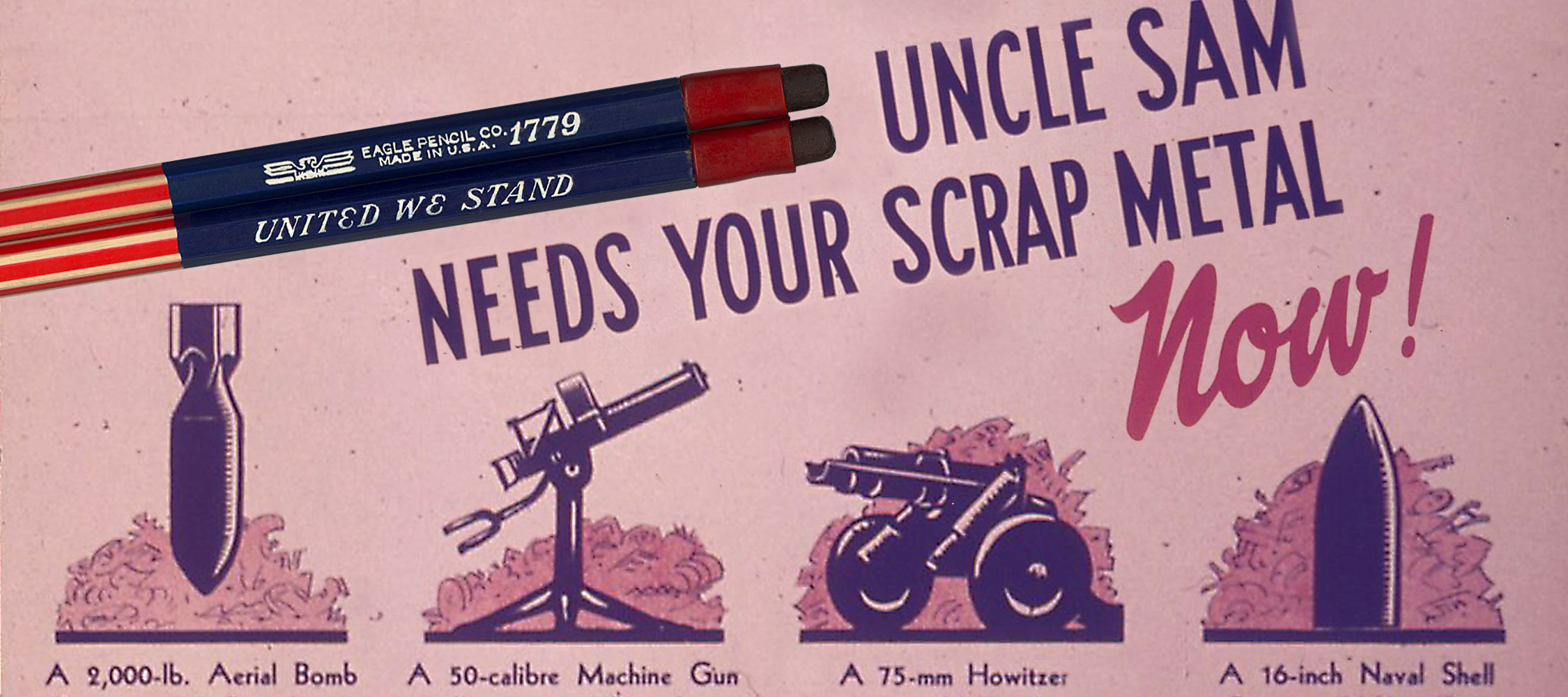
Paper or plastic? The brief and fascinating history of WWII-era pencil ferrules
If you ever come across an old pencil with a small piece of plastic or cardboard on the eraser end, hang on to it. You’ve got yourself a very special piece of history.

First, what’s a ferrule?
Not all pencils have ferrules, because not all pencils have erasers. But when a pencil does have an eraser attached at the end it’s almost always joined with a shiny metal sleeve called a ferrule. During the pencil assembly process this small piece, which is usually made from brass or aluminum, is crimped at each end to hold the rubber eraser and wooden barrel together. Sometimes a little glue is added for good measure.
Over the years pencil manufacturers have had fun with creative ferrule designs, even patenting the more useful and unique ideas. The wildly popular Blackwing pencils with adjustable erasers are a perfect example. Not only do these modern era pencils look great, their larger and heavier Blackwing-style ferrules add a touch of extra weight that really feels good in the hand.

Metal recycling becomes patriotic
But let’s back up eighty years to the early 1940s, when the value of metal was shooting through the roof. World War II was just beginning, and it was about to change everything — including how pencils were made in North America.
With raw materials suddenly in high demand, U.S. communities began organizing “scrap drives” for the production of fighter planes, tanks, and other military equipment. In 1942 President Franklin D. Roosevelt established the War Production Board, which was in charge of allocating resources such as steel, aluminum, and rubber. Recycling became a way for American civilians at home to support the war effort abroad. And everyone was encouraged to chip in.
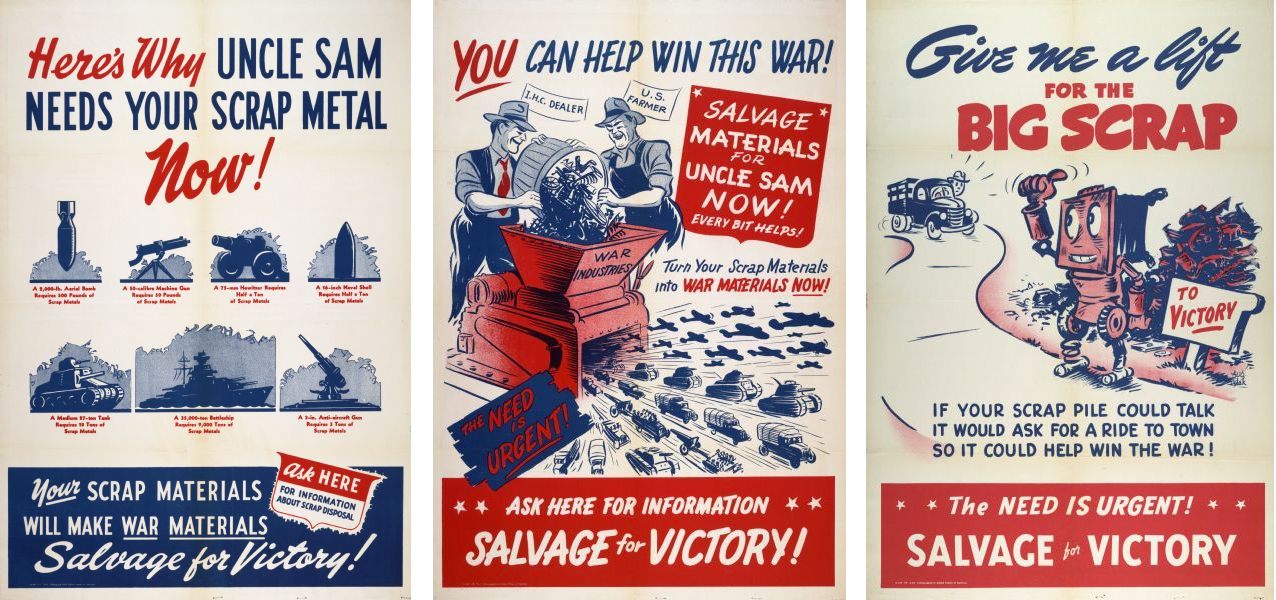
Here’s how Katharine Phillips of Alabama, who was a sophomore in high school when the United States entered the war, described what she experienced in an interview with PBS:
“All the old iron beds were pulled out of the garages and they were put in the metal drives. The Boy Scouts did a great deal of that. The city took up the old streetcar lines… and we added those to the scrap pile. But everyone took part in World War II down to the youngest child.”
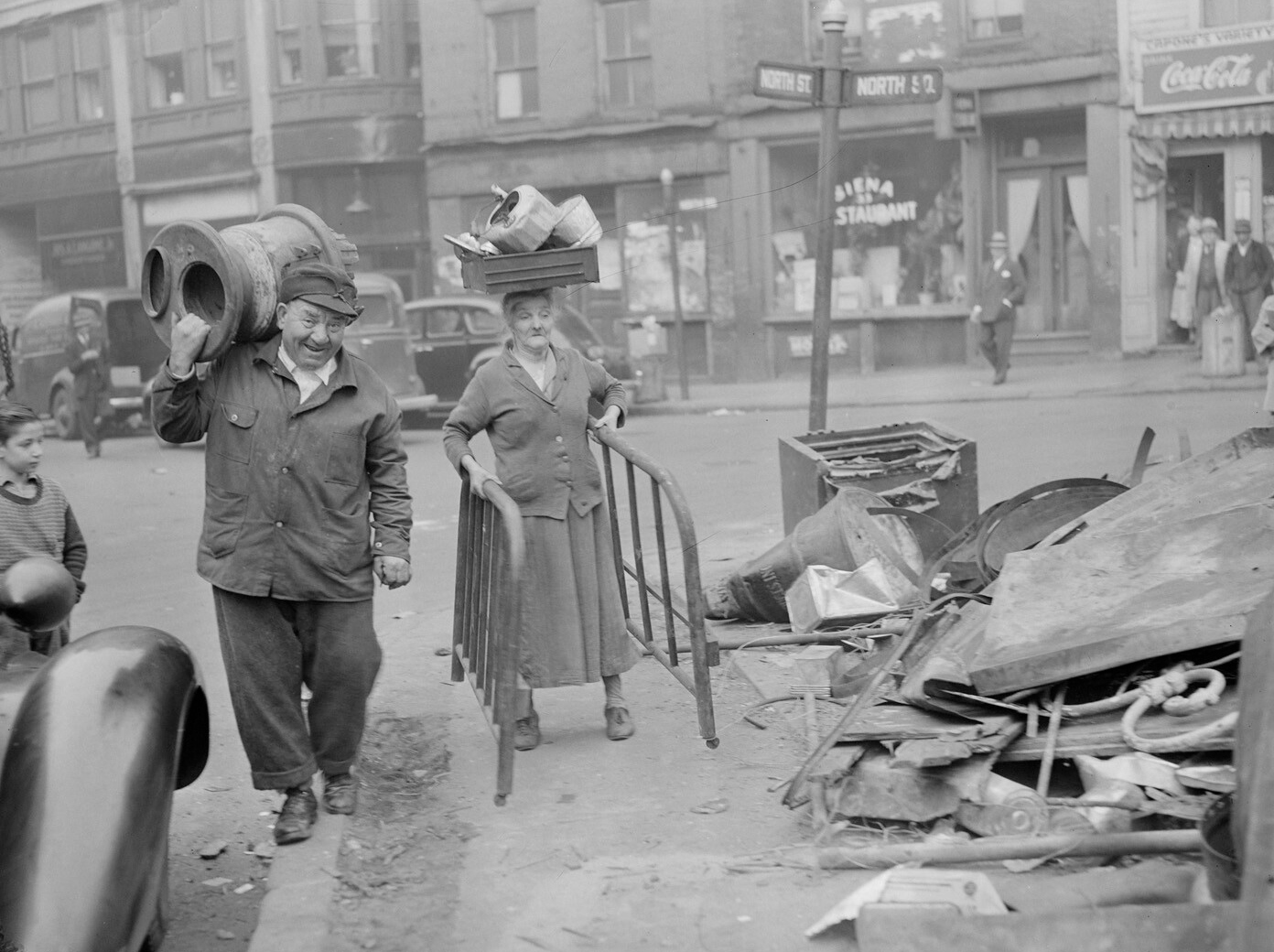
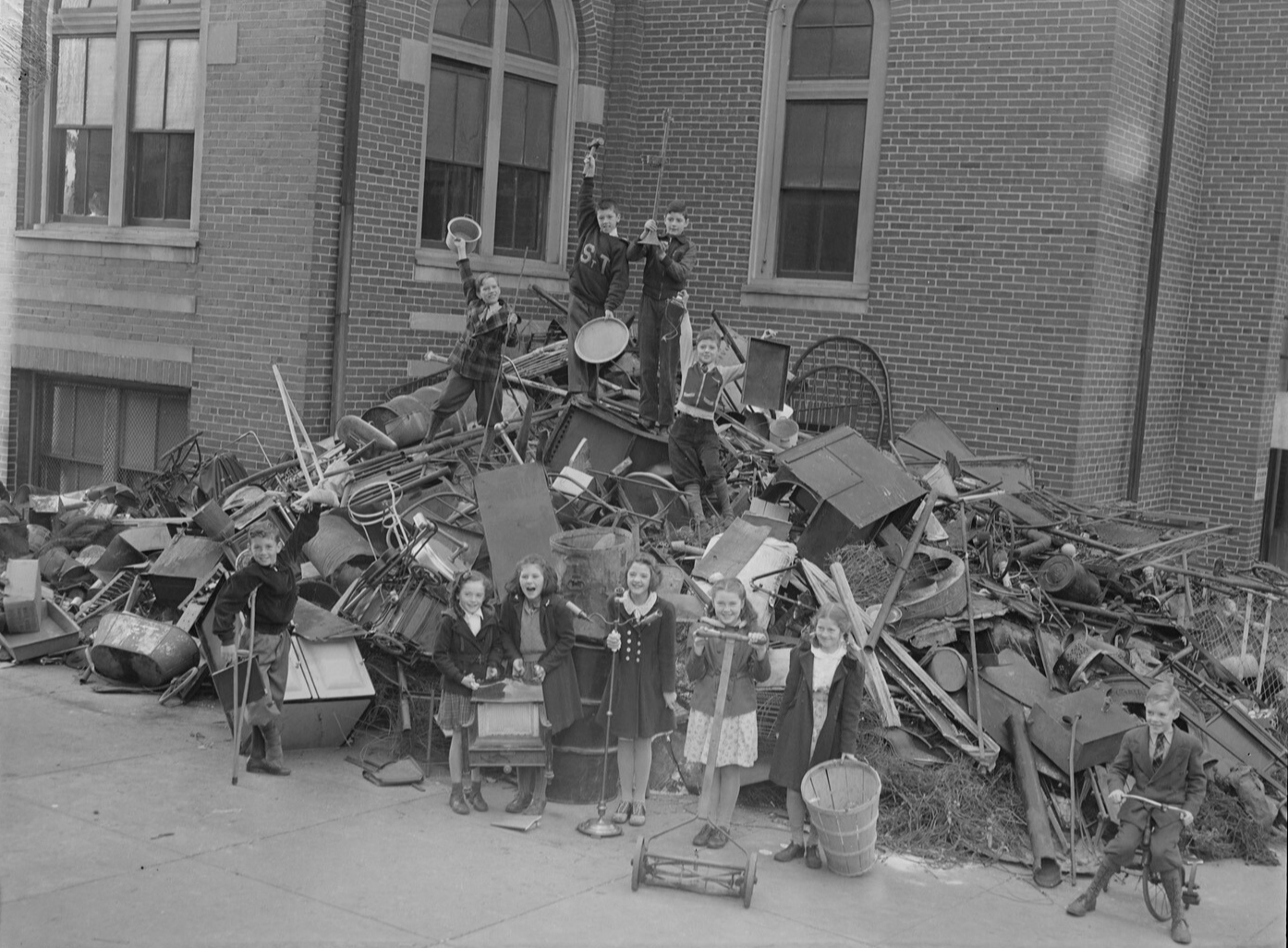
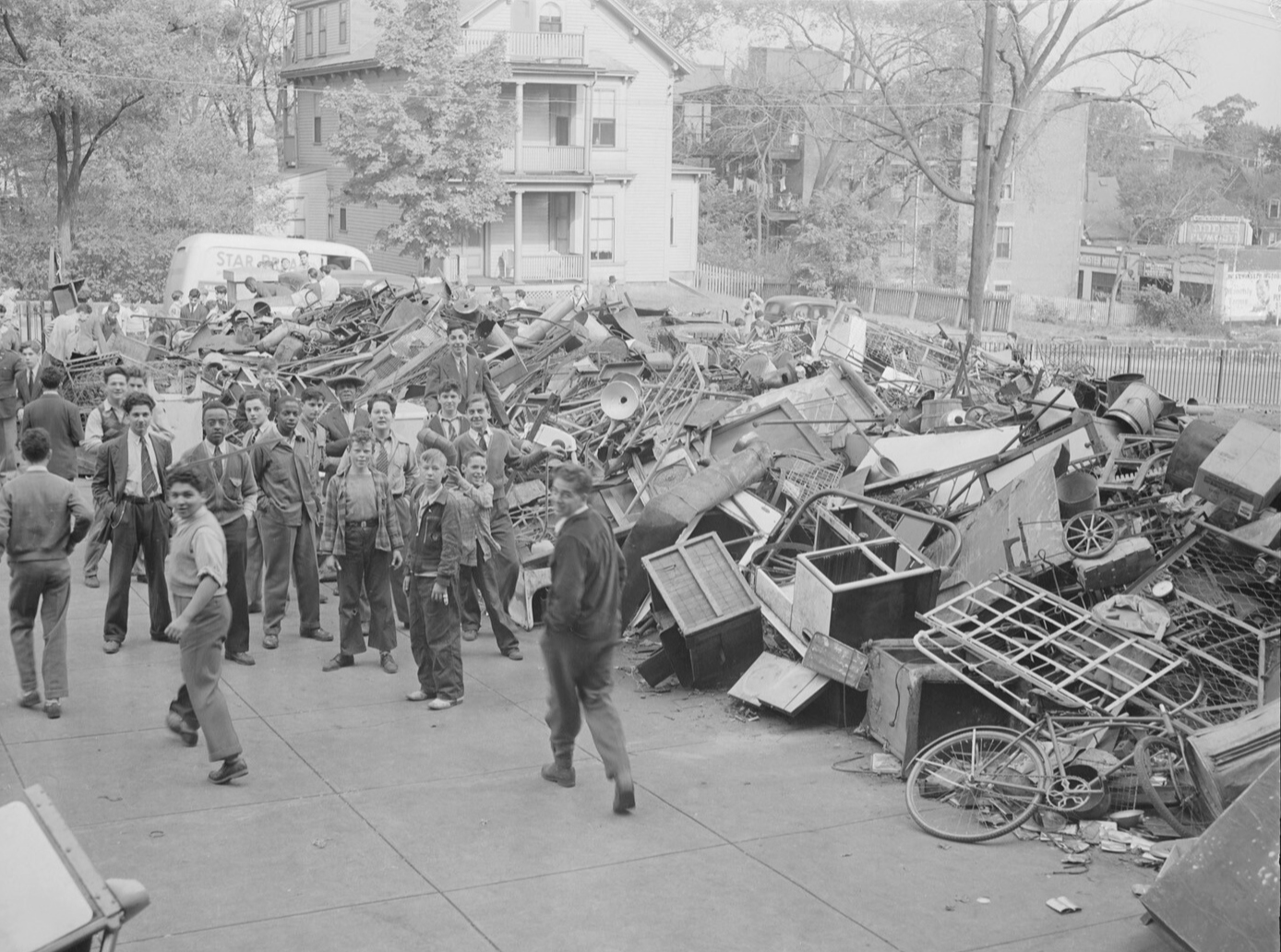
It should be no surprise that patriotic pencils were wildly popular in the United States at this time. Many manufacturers including Eagle, Dixon, and General proudly painted some of their WWII-era pencils red, white, and blue.




The short-lived era of non-metal ferrules
With brass, tin, and other metals being redirected to support the war, other cheaper and more versatile materials moved in to fill the void. Although it had been invented decades prior, WWII dramatically accelerated the adoption of plastic into everyday life. Pencils were no exception.
But while lightweight, flexible, and low-cost plastics are quite suitable for certain goods today, plastic on pencils never caught on. Same goes for the cardboard ferrules attached to many WWII-era pencils. I suspect this was, at least in part, due to the fact that paper and plastic ferrules wouldn’t crimp to wood and rubber in the same way that brass and aluminum could. But a more likely reason, I think, is because non-metal ferrules just didn’t feel right. Pencils are supposed to look a certain way. They’re supposed to have a wooden barrel and a metal ferrule and that’s just the way post-war America wanted it.
So, not long after Japan’s surrender on September 2, 1945, metal was back. And paper and plastic ferrules soon became a footnote of WWII history.



Discovering WWII-era pencils today
Which brings us back to the present — a time when World War II memorabilia fans and vintage pencil collectors alike find themselves hunting the same elusive treasure. Pencils from this era are hard to come by, but once in a while you will find them pop up for sale. Here on Brand Name Pencils you can explore more than 90 different WWII-era ferrule pencils in my online museum and, if you’re lucky, find one to add to your own personal collection of fascinating pencil antiquities.